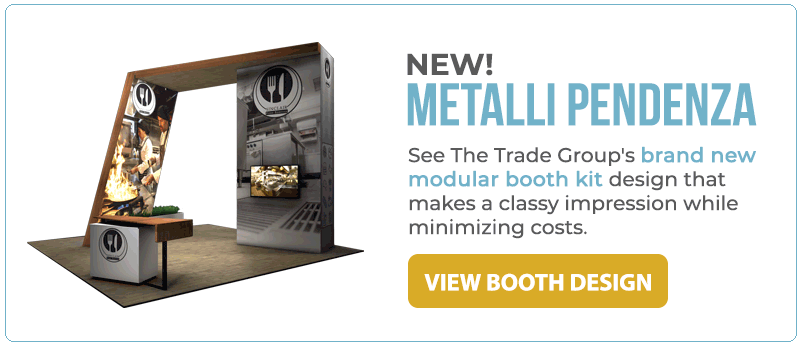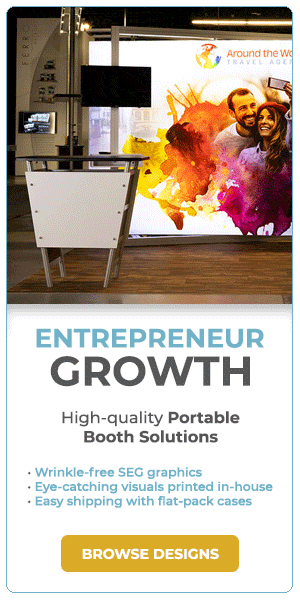
Creating a trade show calendar is an essential step in your quest to make a strong bond between your brand and a consumer
Viewing every upcoming trade show and how much time you have to prepare helps ensure that you stay on schedule.
It’s a tactic that will help you ensure your events run smoothly and stress-free.
Review event feedback and data
The ultimate goal of your trade show program is for your brand to engage and motivate attendees. That’s why, in building a vision of your future trade shows and events, it’s helpful to start with a glance at the past.
Carefully analyze data and feedback from your past events to review what worked, and perhaps more importantly, what didn’t.
By understanding successes and missteps, you comprehend your audience’s expectations and can take measured steps to fulfill their – and your – goals at your upcoming events.
Identify trade show goals
Every aspect of the trade show planning process is easier if you define and understand the motivations behind attending an event.
What do you hope to accomplish? Gather 50 leads? Increase annual sales by 30 percent?
Whatever the answer, once you identify your goals, you’re only halfway there.
Next, you need to ask what attendees hope to achieve by visiting your booth (and attending the show in general). What do they want, and how can you help them accomplish it?
Now, are your goals in line with theirs? Does solving their needs lead to achieving yours?
If the answer is yes, you’re on the right track. If not, you need to evaluate your objectives because you can’t change theirs.
The next step is to consider how your goals align with the event’s intent.
What is the stated purpose of the event? Who is most likely to attend? Who are the primary sponsors, and what do they hope to achieve?
You have likely already addressed some of the issues in thinking about your goals and the attendees’ motivations. Still, this step looks at information from a slightly different point of view, which can be very enlightening.
By giving yourself the time and opportunity to view your upcoming event holistically from all angles, you are setting yourself up for success.
Create a timeline
You can never prepare for every obstacle that will occur in the run-up to an event, but you can build buffers into your timeline to help ensure complications don’t derail your plans.
To do that, you should create a thorough timeline. Here are some benchmarks to include:
- Secure a trade show location as soon as possible to receive the early bird discount
- If you have a custom-made exhibit, know when to order and when it will be ready
- Make reservations if you intend to host off-site functions
- Make travel arrangements and book hotel rooms
- Assemble your on-site team
- Create a team schedule for the show days
- Train the on-site team
- Secure show services
- Develop pre-show marketing
- Ensure all promotional materials are ready to be delivered on time
Remember, the one thing you can expect is that the unexpected will happen. So, your timeline is never completely set in stone. You must be willing to adapt.
The unexpected is not always a bad thing.
Should an unexpected opportunity occur, be ready to embrace and take advantage of it. Being adaptable also means recognizing – or listening to and accepting feedback – when something is not working and making the necessary changes.
Finally, ask yourself, how does a successful event look? At the end of the show, the doors have closed, the I&D crew is getting to work, what will it take for you to say that the time spent at this trade show was a complete success?
Develop a budget
According to EXHIBITOR Magazine, the average trade show budget for 2022 breaks into the following categories:
- 32% of the budget spent on exhibit space
- 14% on staff travel and lodging
- 14% on show services
- 12% on shipping exhibit materials
- 9% on graphic design and production
- 7% on exhibit promotion
- 7% on other exhibit-related items
- 5% on exhibit design and construction
The percentages for “exhibit space” and “travel and lodging” tend to remain relatively consistent, while the rest fluctuate over time.
So, use these percentages as a general trade show budget guide, but don’t be shocked if the percentages change a little.
There is a formula to make a rough estimate for a trade show budget: multiply the amount you plan to spend on exhibition space by three. For example: If you plan on paying $7,500 for space, the rough estimate for your total budget is $22,500.
This budget should include expectations for a return on investment, including the time when ROI can truly be evaluated, which can be months or years away, depending on your industry.
Continue after the event has ended
Once the doors to the show floor close, immediately send out thank you emails or follow-up packages to every lead or contact you collected while the interaction with your brand is fresh in their minds.
The longer you wait, time takes a toll, and opportunities are missed.
Then take a look at your show.
What sort of feedback did you receive from attendees, your staff, and stakeholders within your company? How can you use this feedback to improve your trade show participation?
Were you able to achieve your objectives? If so, what helped you succeed? How can you replicate these successes for your following shows? Could some of these achievements be done even better? If some objectives were missed, what happened, and how can you avoid these pitfalls in the future?

The Trade Group is a full-service trade show and event marketing company. We will work with you to create an exhibit or an event that brings in leads and helps you achieve your business goals. Contact us here or give us a call at (800) 343-2005.




